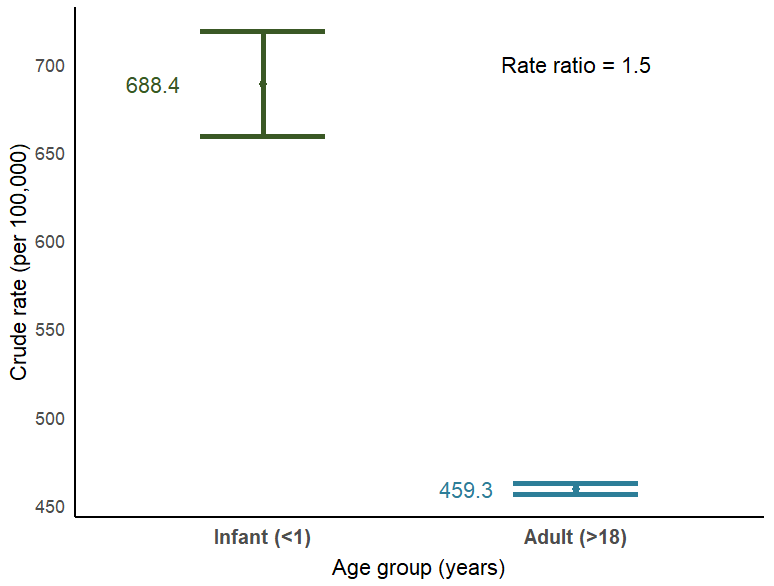Injuries by developmental stage
Introduction
Many causes of injury affect children at higher rates compared to adults, given their differences in maturity, anatomy and physiology. As children grow and their mobility increases, they are vulnerable to different injury mechanisms.
The following pages detail causes, types and sites of injury that disproportionately affect children by developmental stage compared to adults. Developmental stages used in this report are:
- infants (under one)
- early childhood (1–4)
- middle childhood (5–12)
- adolescence (13–18).
Figure 19 below summarises the key differences by developmental stage.
Figure 19: Injury hospitalisation and emergency department presentation rate ratios of children compared to adults, by cause, type and site of injury, Australia, 2021–22
An interactive Tableau with causes, injury types and sites where rates are higher in child age groups compared to adults.

How were injuries that affect children differently to adults identified?
Crude rates (per 100,000 population) of injury hospitalisations and ED presentations across each developmental stage were compared with the respective rate for the adult population. A 95% confidence interval was estimated for each rate using an exact Poisson method. A rate ratio was used to assess the difference between child and adult rates. A cause, type or site of injury was determined to be ‘disproportionately’ affecting an age group of children if it fulfilled the following criteria:
- Rate ratio >=1.3: the rate of injury hospitalisation or ED presentation for children is at least 1.3 times the rate for adults
- Independence of confidence intervals: the lower bound of the rate confidence interval for children did not overlap with the upper bound for adults.
An example of an injury type fulfilling these criteria is shown in Figure 20. For head and neck injuries, infants have a rate of hospitalisation of 688.4 per 100,000 and adults have a rate of 459.3 per 100,000. Comparing the groups, the rate of injury hospitalisation for infants is 1.5 times the rate for adults. The rate is above the cutoff of 1.3, and visually, we can confirm that there is no overlap of rate confidence intervals.
Figure 20: Crude rates and confidence intervals of injury hospitalisations involving an injury to the head and neck, among infants aged under one, and adults aged over 18, Australia, 2021–22

Notes:
1. Rates are crude per 100,000.
2. Confidence intervals are calculated using exact statistical Poisson method.
Sources: AIHW National Hospital Morbidity Database (NHMD) and ABS National, state and territory population.


